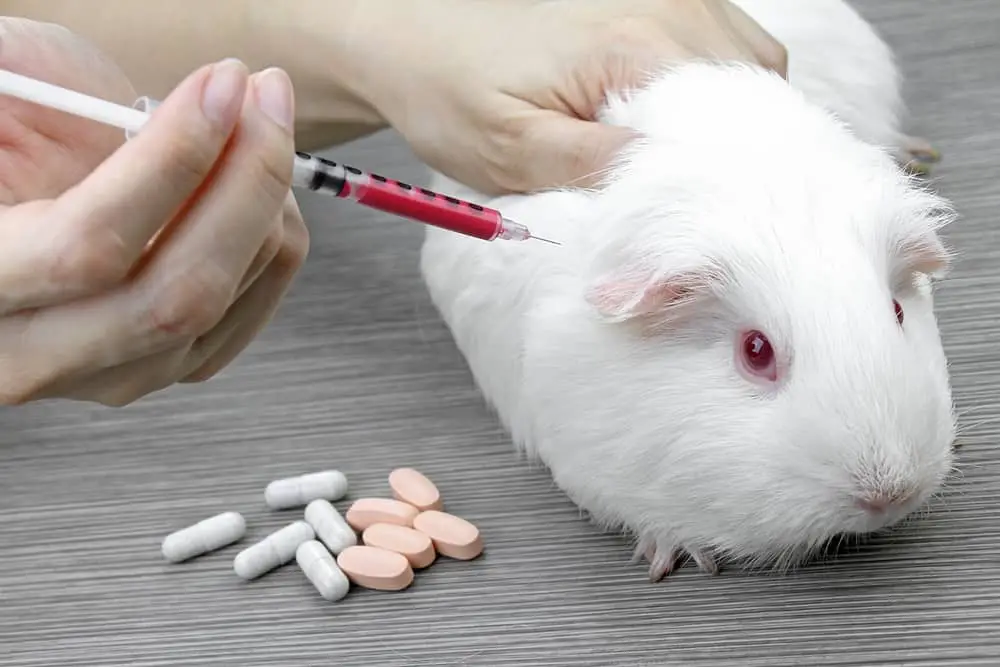When Did Controversy Arise In Animal Experimentation
The History of Creature Testing – When Did it Start? (detailed timeline)
Brute testing has existed since the outset of medicine and has led to incredible discoveries and the creation of cures for a long list of ailments. But when did it all start and why? Every bit cruel every bit this exercise is, it's also brought many scientific discoveries.
The use of animals every bit models in medical research isn't a new concept. Over 26 million animals undergo lab testing in the Us every year. These animals are used to make up one's mind the toxicity of medications, develop new treatments, and check for safety products intended for human being, commercial, and biochemical uses.
Who invented animal testing? In this blog post, we explore the history of animal testing in detail. Here'southward everything you lot should know.
When Did Testing on Animals Begin?
Animal dissection dates back every bit early as circa 500 BC. Scientists like Erasistratus, Herophilus, and Aristotle performed diverse experiments on animals to observe living organisms' functions.
In ancient Rome and Alexandria, scientists practiced vivisection (dissection of a living organism) on homo criminals. Notwithstanding, prohibitions against the mutilation of the human trunk led them to rely solely on animal subjects.
Aristotle justified using animal subjects by maxim that animals lack intelligence. Therefore, the notion of justice or injustice shouldn't apply to them.
His successor Theophrastus has a unlike stand on the matter. Co-ordinate to him, similar humans, animals experience pain. Therefore, the vivisection of animals was an inhumane act and an insult to the gods. Notwithstanding, despite his stiff opinions, the practice continued.
In 130-200 AD, a famous Roman md and philosopher named Galen was in the spotlight for his influential medical theories throughout Europe. Galen engaged in public vivisection of animals, including an elephant at some signal, which was a popular class of entertainment at the fourth dimension.
Galen is amid the scientists that encouraged the vivisection of animals, and he had no sympathy any. He even encouraged his students to vivisect the animals without pity or pity.
Between 1578 – 1657
In the years that followed, more than and more scientists were making incredible discoveries thank you to their beast tests. William Harvey was among the great scientists in this era. During this menses, he discovered that information technology's the heart that pumps blood and not the lungs through animal testing.
René Descartes was also among the scientists of this era. He would experiment on rabbits, eels, fish, and more animals. He believed that animals are "automata" that could not experience pain or suffering.
Descartes recognized that animals could feel pain, but they are unable to feel those feelings as humans do considering they lack intellect.
The 1800s and Early 1900s
Until the 19th century, there was little objection against animal testing. The increased adaptation of domestic animals in the 19th century fueled the anti-vivisection of animals motility in England. The tendency led to the formation of the Society for the Protection of Animals Liable to Vivisection in 1875 and other similar groups.
Among the first people to respond to the movement was French psychologist Claude Bernard. He argued that animal testing is ethical considering it plays a crucial part in extending human life and benefits medicine.
Queen Victoria was on the opposing side. She expressed her shock at some of the animal research practices. Before long after, the anti-vivisection campaign became even stronger. Lawmakers began taking steps towards putting an end to the practice. In 1876, Nifty U.k.'s Cruelty to Animals Act was enforced into law.
Every bit y'all tin see, the contend around whether animal testing is ethical and necessary, or barbarous and meaningless has been around for a long fourth dimension. From a humanitarian standpoint, no one can deny that animal testing is savage even if it has been beneficial.
If y'all want to get into the ideals behind animal testing, then this is the perfect article for you to read next: Animal Testing and Ethics – Everything Y'all Need to Know
The Introduction of Humane Animal Testing Techniques

Due to the lack of alternative testing methods, brute testing continued despite the strong campaign confronting it. But in the year 1959, things seemed to accept been moving in the right direction. Zoologist William Russel and microbiologist King Burch published The Principals of Humane Experimental Technique.
This book outlined the humane experimental techniques that must be used when testing on animals. The scientists referred to the techniques every bit the principle of the iii Rs. They include:
These three Rs were incorporated in the Animal Welfare Association (AWA) and have acted as a guideline for international animal welfare laws.
Continued Use of Brute Testing in Space
When the upshot of animal testing arises, most people assume scientists are the chief culprits. However, animal testing is also prevalent in space. The United states of america space program has been using animals for testing since 1948. They tested various factors, such as the effects of prolonged weightlessness.
Some of the notable beast testing practices in infinite include:
The Military's Contribution
From the time of the Vietnam War, animate being testing has been prevalent in the military. In 2007 alone, over 400,000 animals were used for inquiry and combat trauma training (live tissues training).
The training included subjecting anesthetized pigs and goats to gunshot wounds, amputations, and burns to train armed forces medics.
In 2013, after continuous opposition from animal rights groups, Congress sent an club to the Pentagon to present a written plan to phase out this type of training. Still, the The states Coast Guard, which was at the heart of a scandal in 2012 involving live footage of animals being mutilated for live tissue training, said in 2013 that the practice would proceed.
Animal Testing in the Modern World

Over the years, there has been a lot of argue effectually the consequence of animal testing. However, in recent times, more than and more than people have joined the masses opposing the practice. So far, there are significant breakthroughs that provide hope for the terminate of beast testing. These include:
Increased Utilise of In Vitro Methods
Many people were opposed to beast testing throughout history, but the practise merely became more than popular despite their objections. Those nonetheless using animal testing procedures argued that there were no alternatives and that the benefits far outweighed the cons.
Things started to movement in the correct management in the year 2007. In a report in the same year, the National Research Quango of the National Academy of Sciences chosen for a reduction in animate being testing, suggesting scientists shift to in vitro methods using human cells. However, targeted animals would nevertheless need to be used to complement in vitro studies for the foreseeable future.
European union Ban on Import and Sale of Animal-Tested Cosmetics
Wrapping Up
Animal testing has been going on for decades now. However, in contempo times, information technology seems like things are finally moving in the right direction. With bans being imposed on these practices, scientists have been forced to develop alternative ways to carry out their research. Nosotros're still a long way from an creature testing-free world, merely we're on the right track!
Latest Articles
Source: https://crueltyfreesoul.com/history-of-animal-testing/
Posted by: cartertherly.blogspot.com

0 Response to "When Did Controversy Arise In Animal Experimentation"
Post a Comment